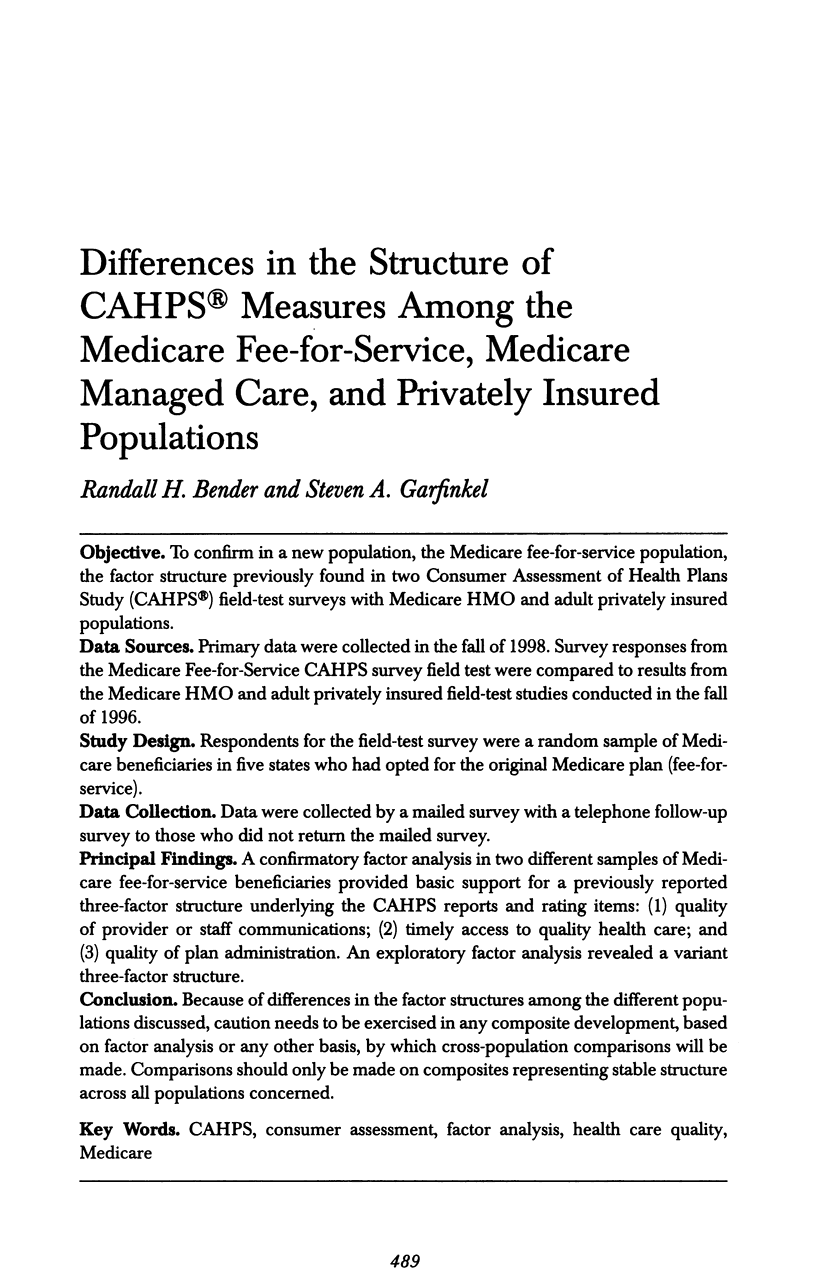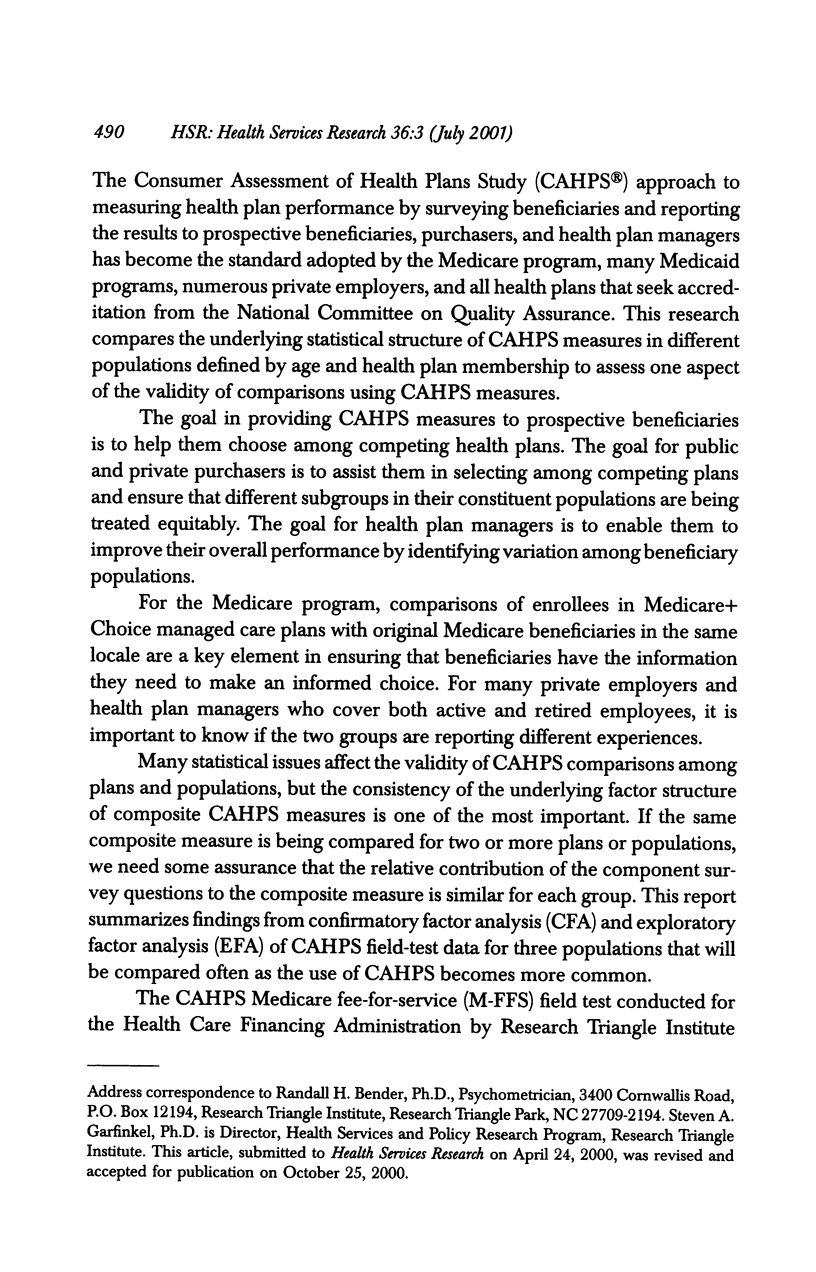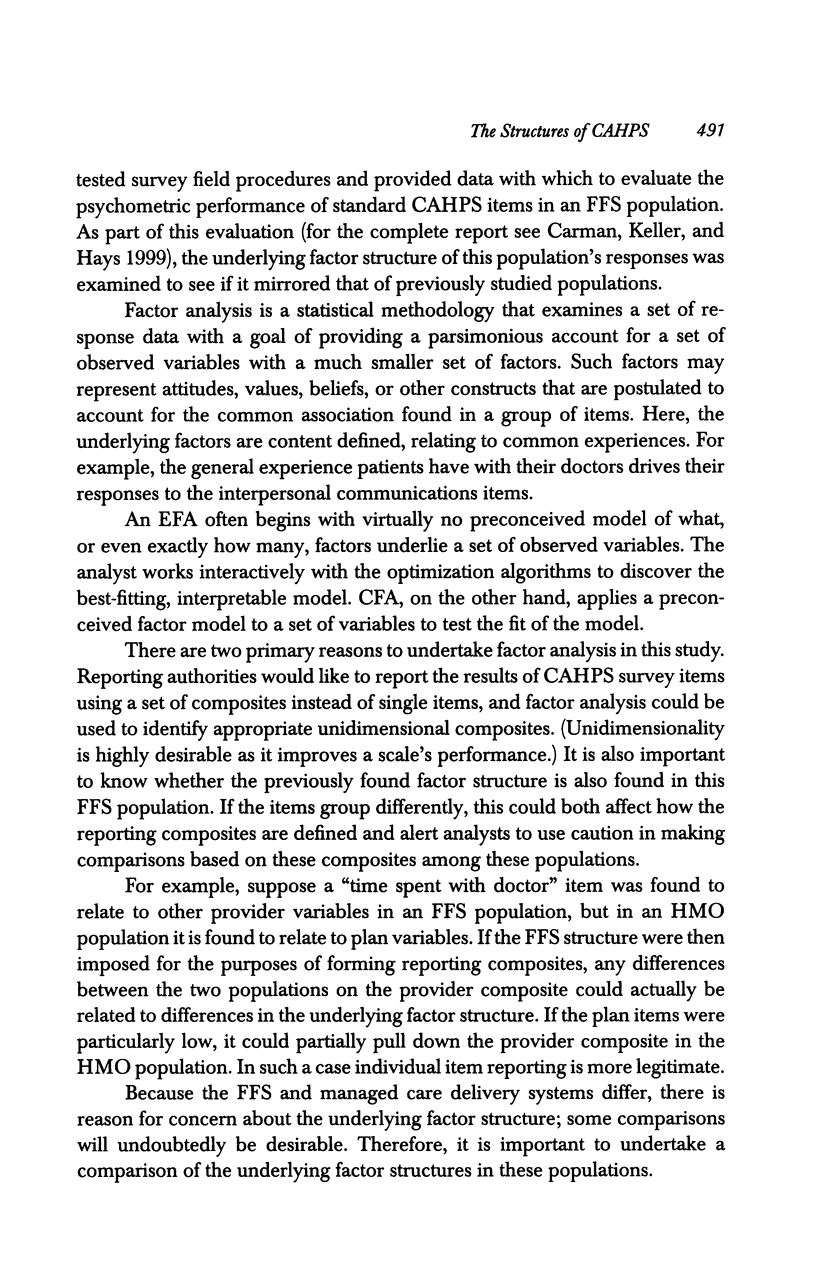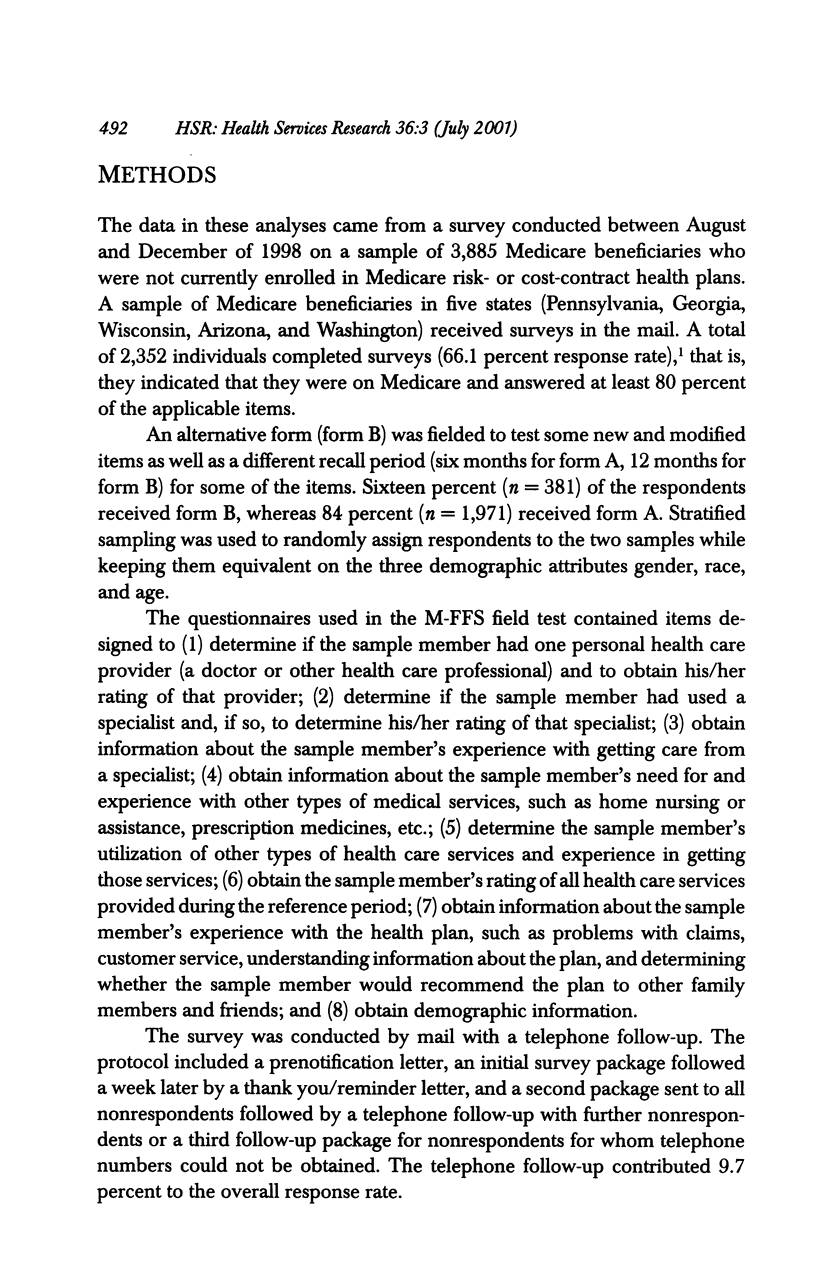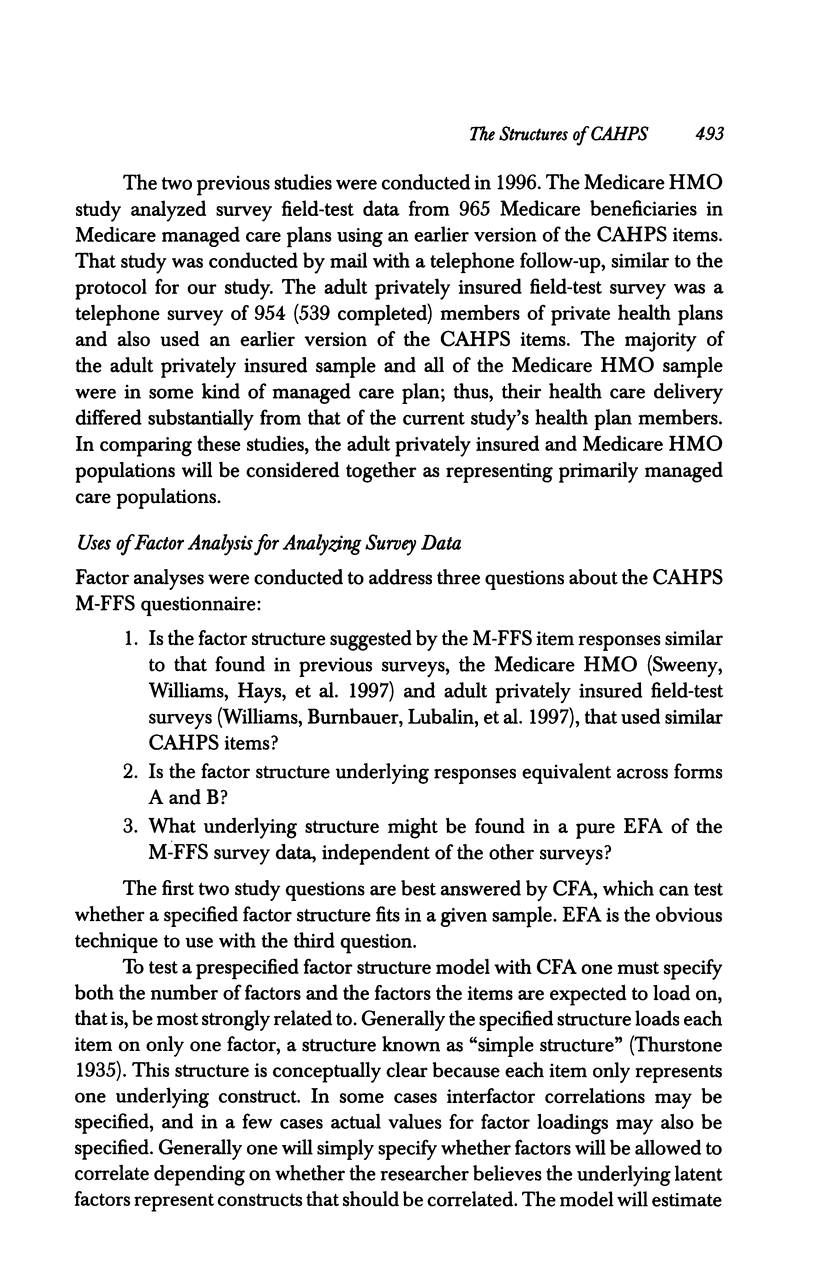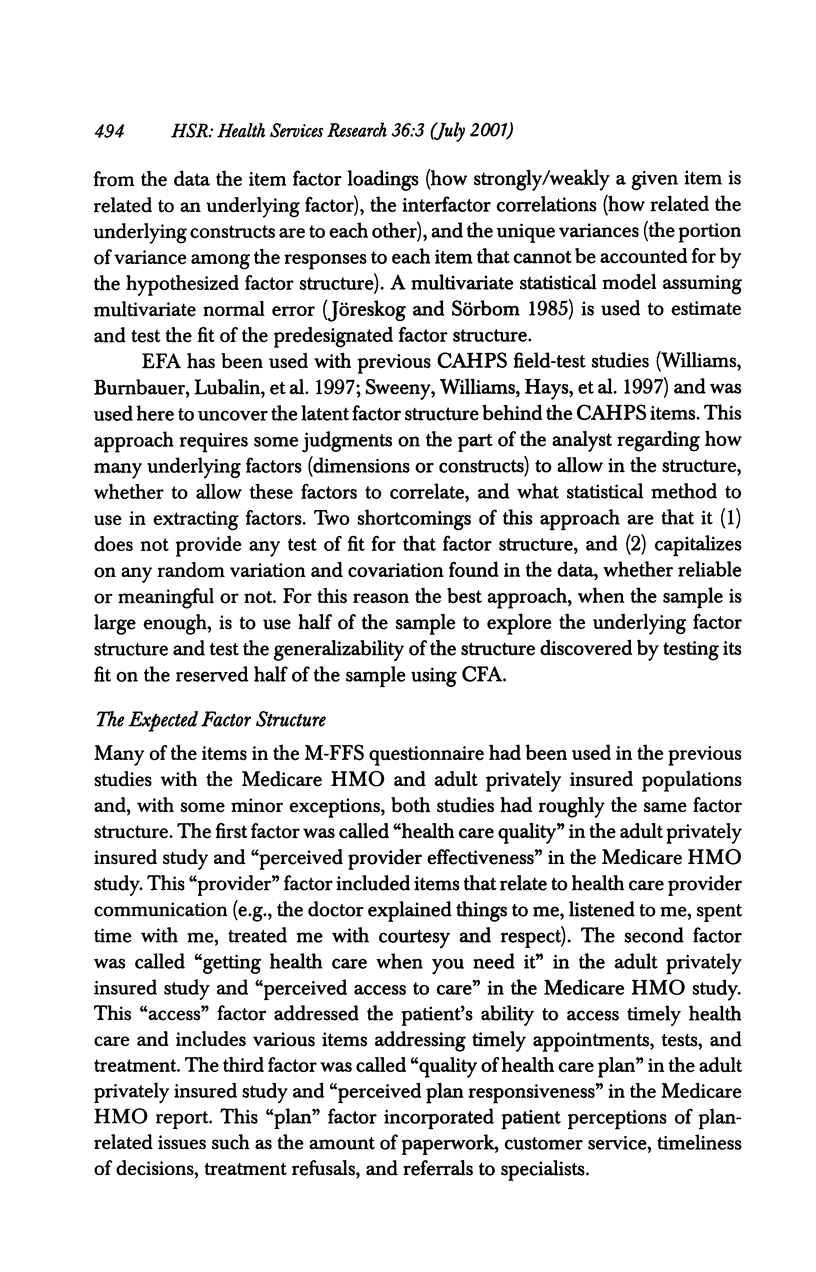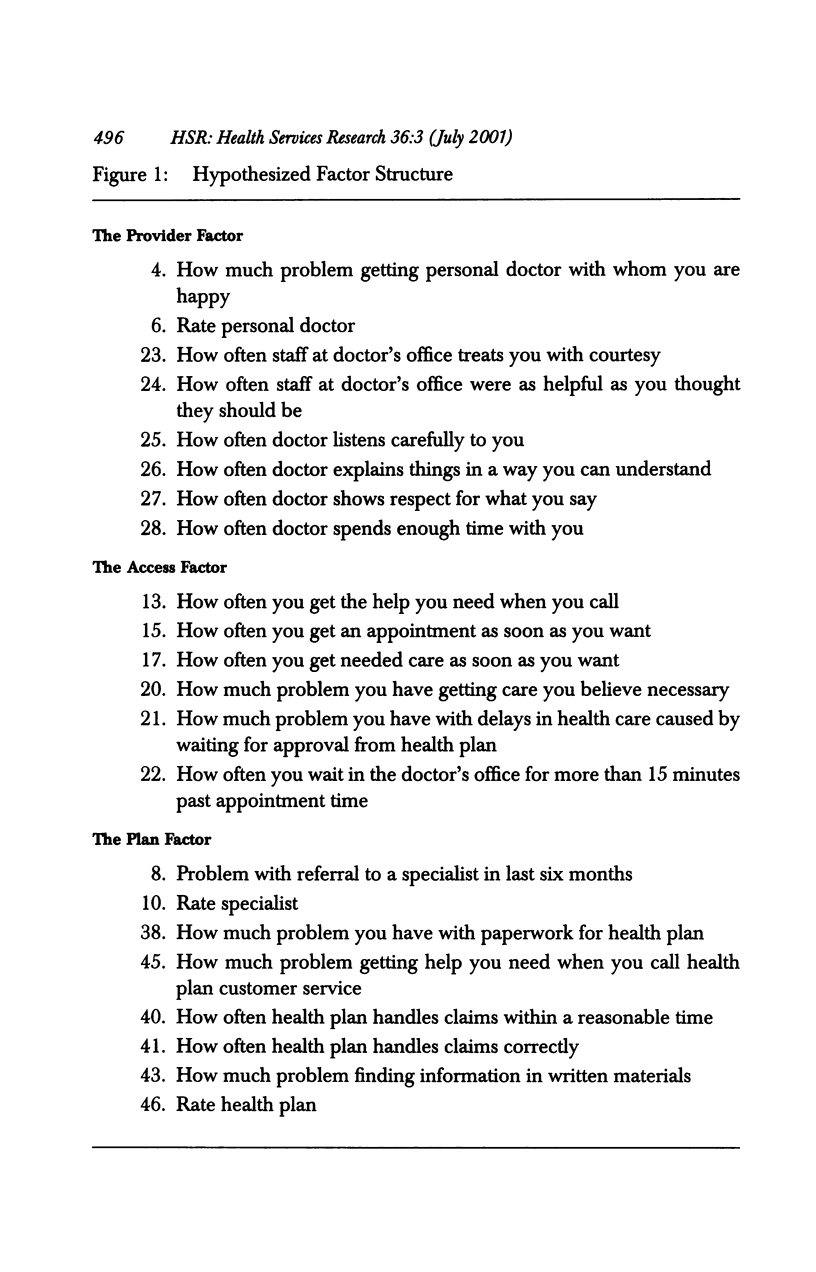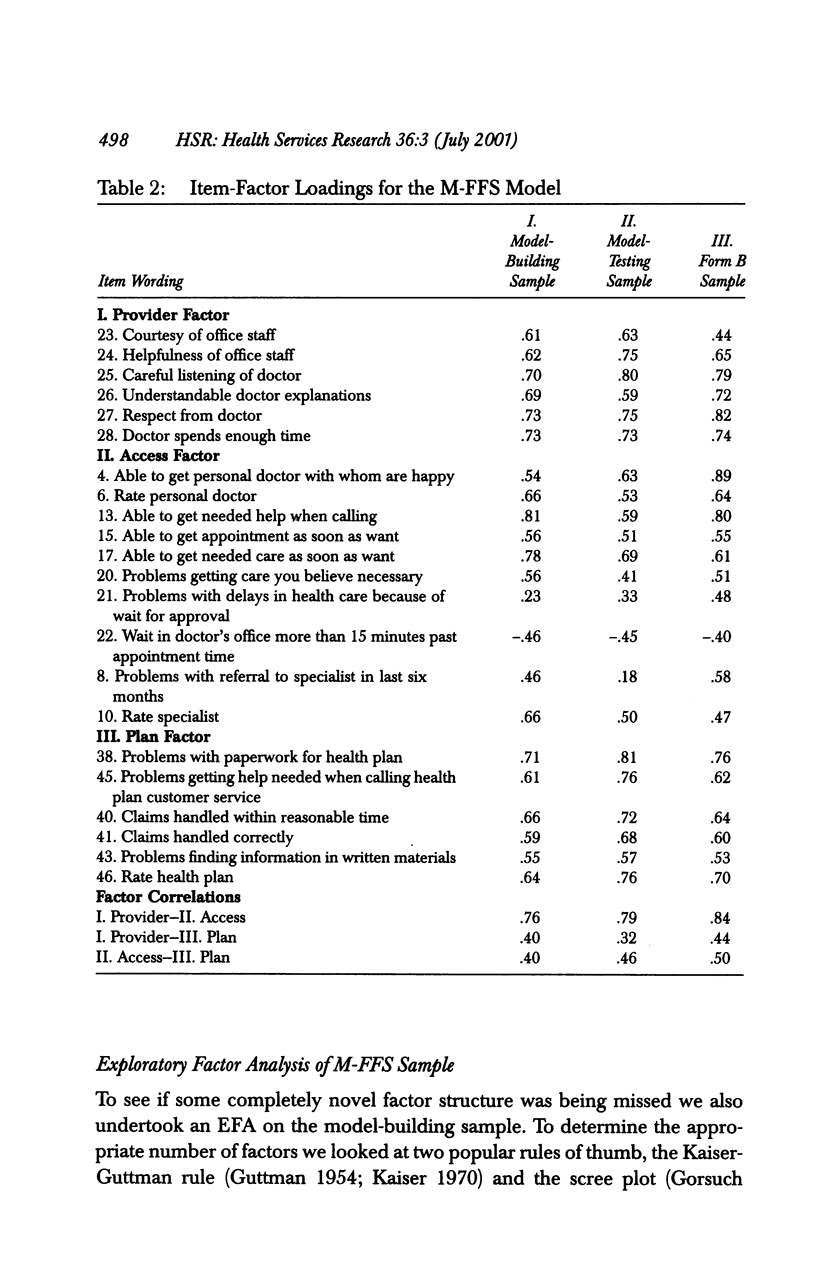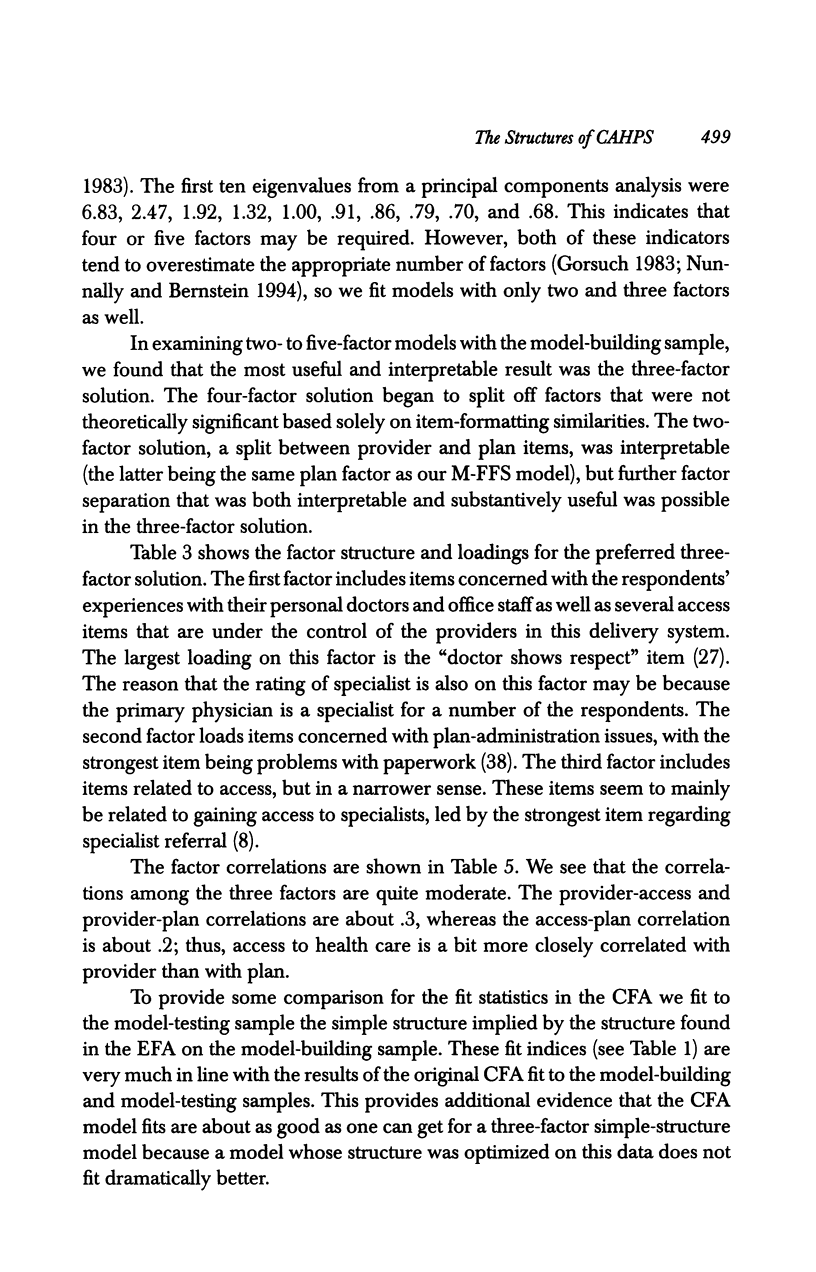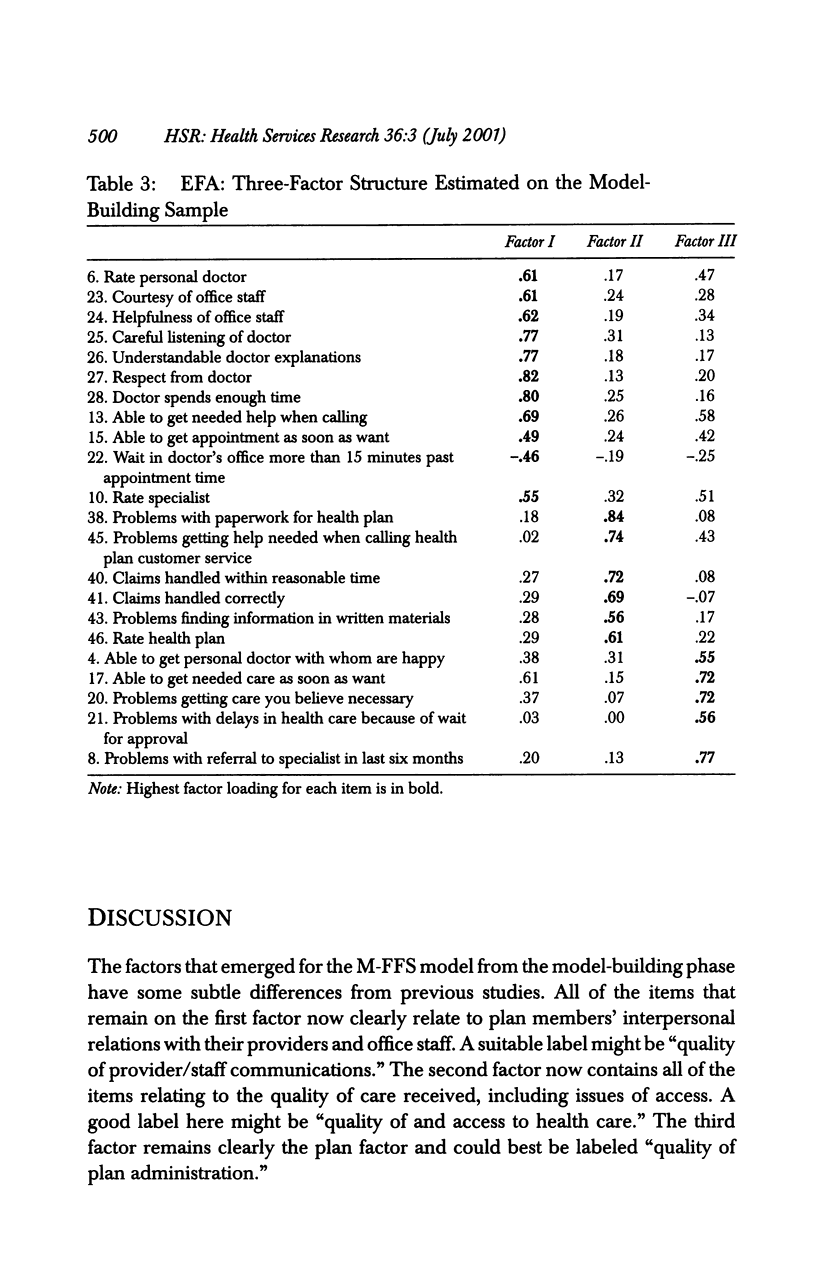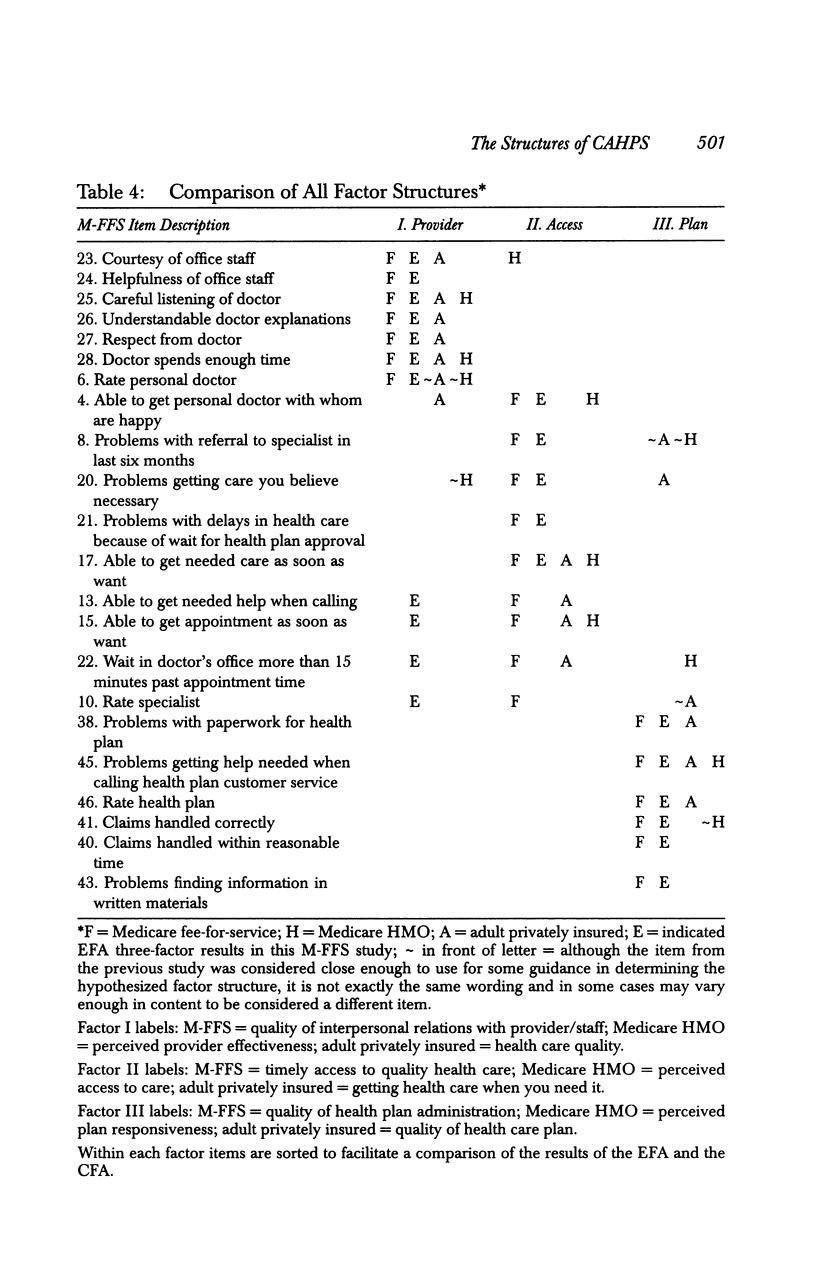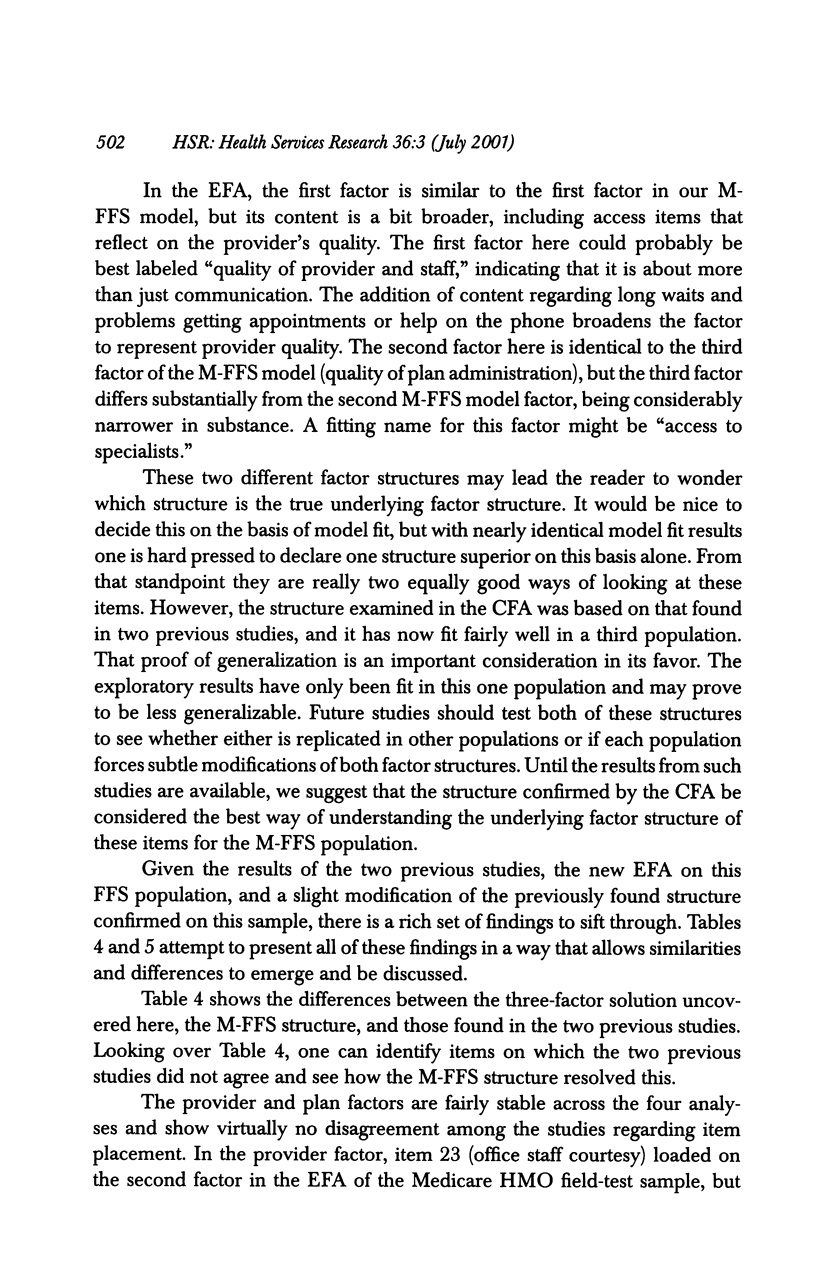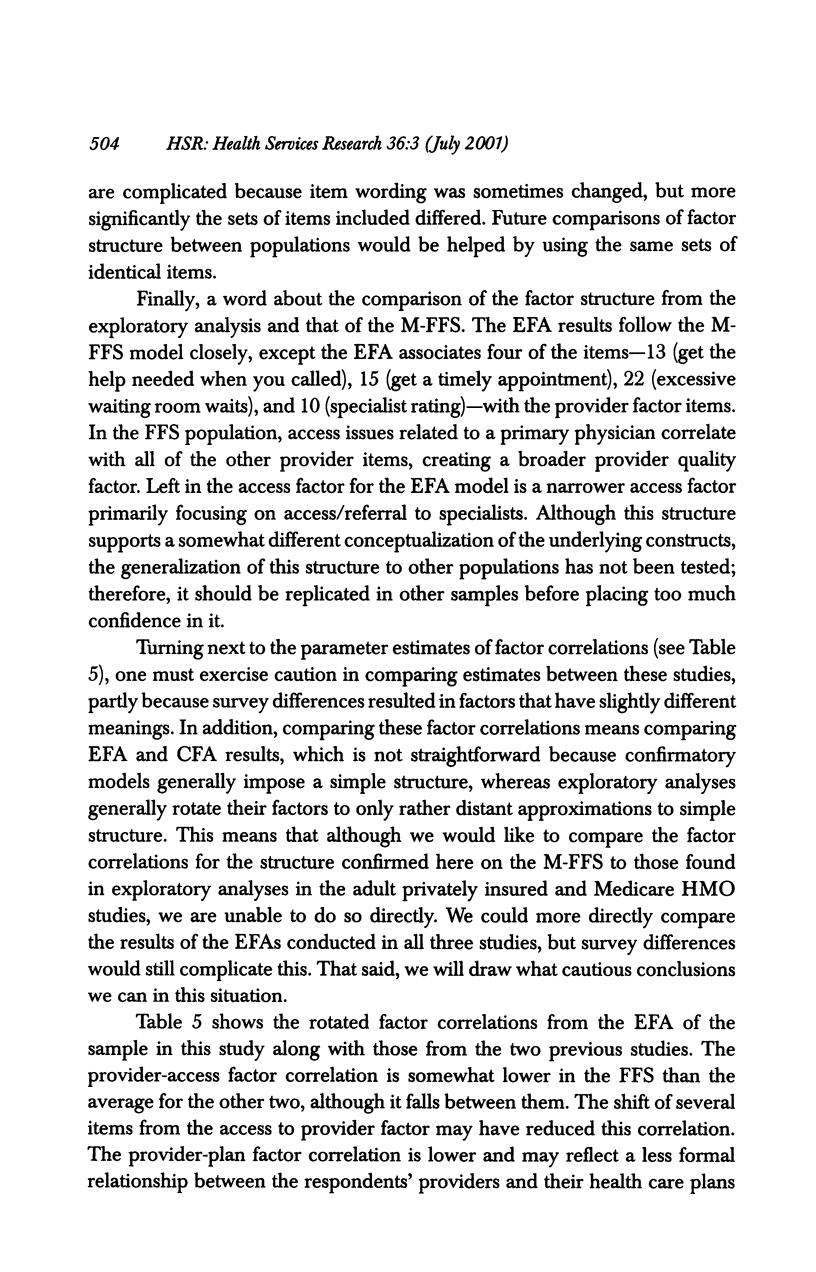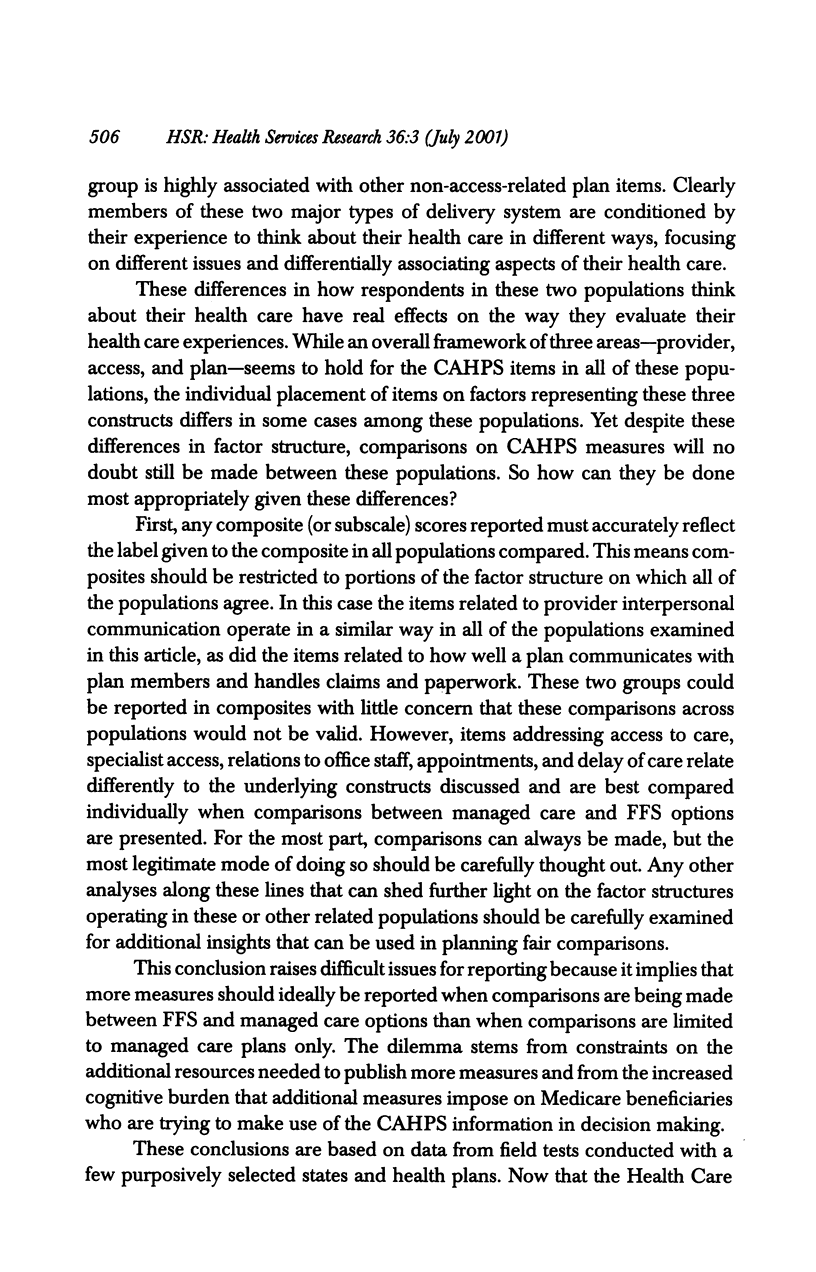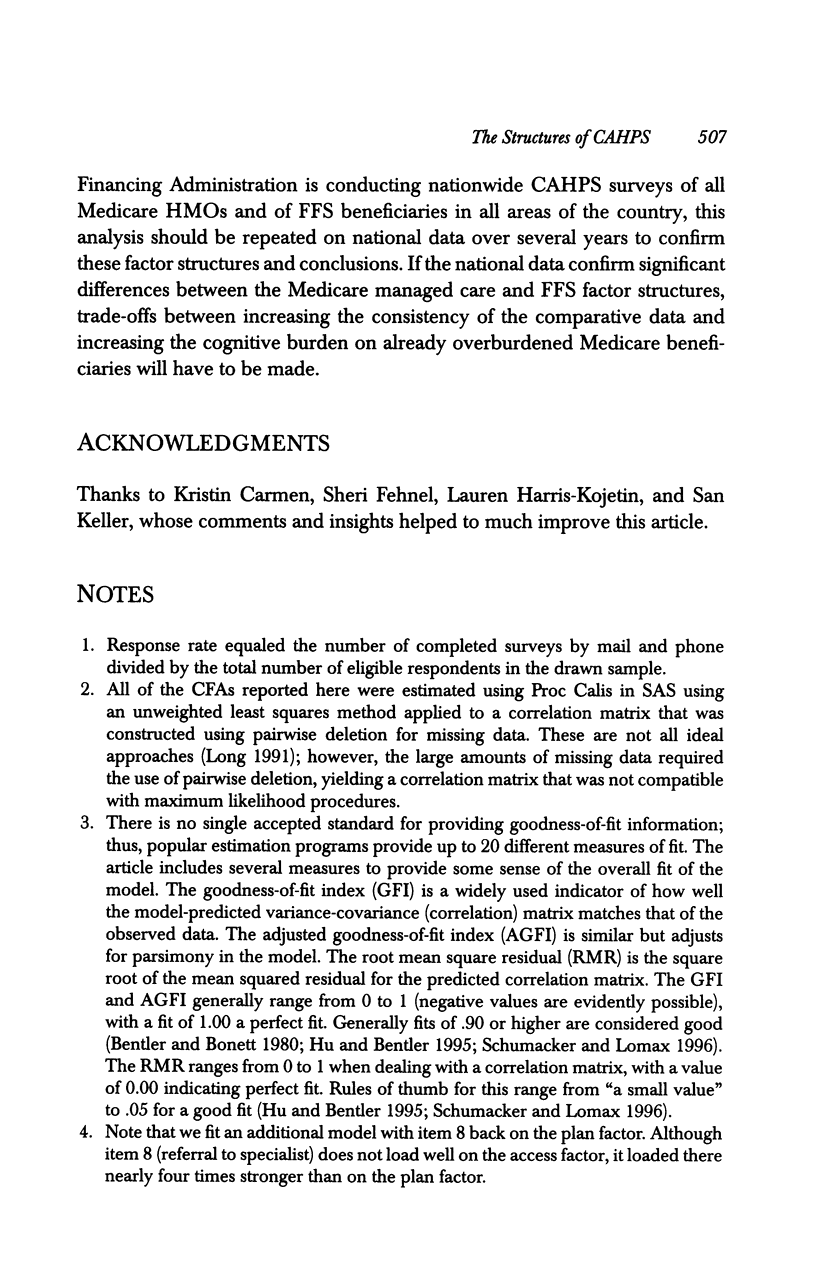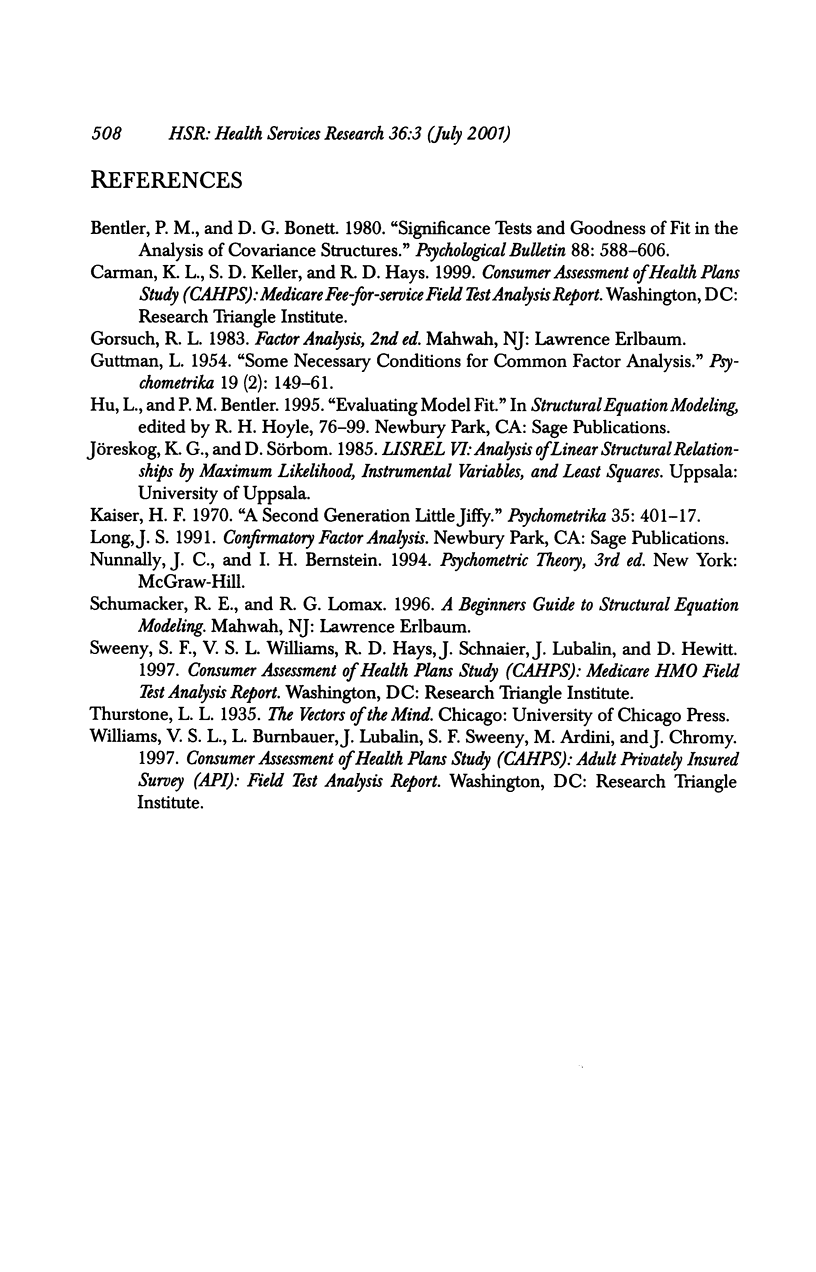Abstract
OBJECTIVE: To confirm in a new population, the Medicare fee-for-service population, the factor structure previously found in two Consumer Assessment of Health Plans Study (CAHPS) field-test surveys with Medicare HMO and adult privately insured populations. DATA SOURCES: Primary data were collected in the fall of 1998. Survey responses from the Medicare Fee-for-Service CAHPS survey field test were compared to results from the Medicare HMO and adult privately insured field-test studies conducted in the fall of 1996. STUDY DESIGN: Respondents for the field-test survey were a random sample of Medicare beneficiaries in five states who had opted for the original Medicare plan (fee-for-service). DATA COLLECTION: Data were collected by a mailed survey with a telephone follow-up survey to those who did not return the mailed survey. PRINCIPAL FINDINGS: A confirmatory factor analysis in two different samples of Medicare fee-for-service beneficiaries provided basic support for a previously reported three-factor structure underlying the CAHPS reports and rating items: (1) quality of provider or staff communications; (2) timely access to quality health care; and (3) quality of plan administration. An exploratory factor analysis revealed a variant three-factor structure. CONCLUSION: Because of differences in the factor structures among the different populations discussed, caution needs to be exercised in any composite development, based on factor analysis or any other basis, by which cross-population comparisons will be made. Comparisons should only be made on composites representing stable structure across all populations concerned.
Full text
PDF